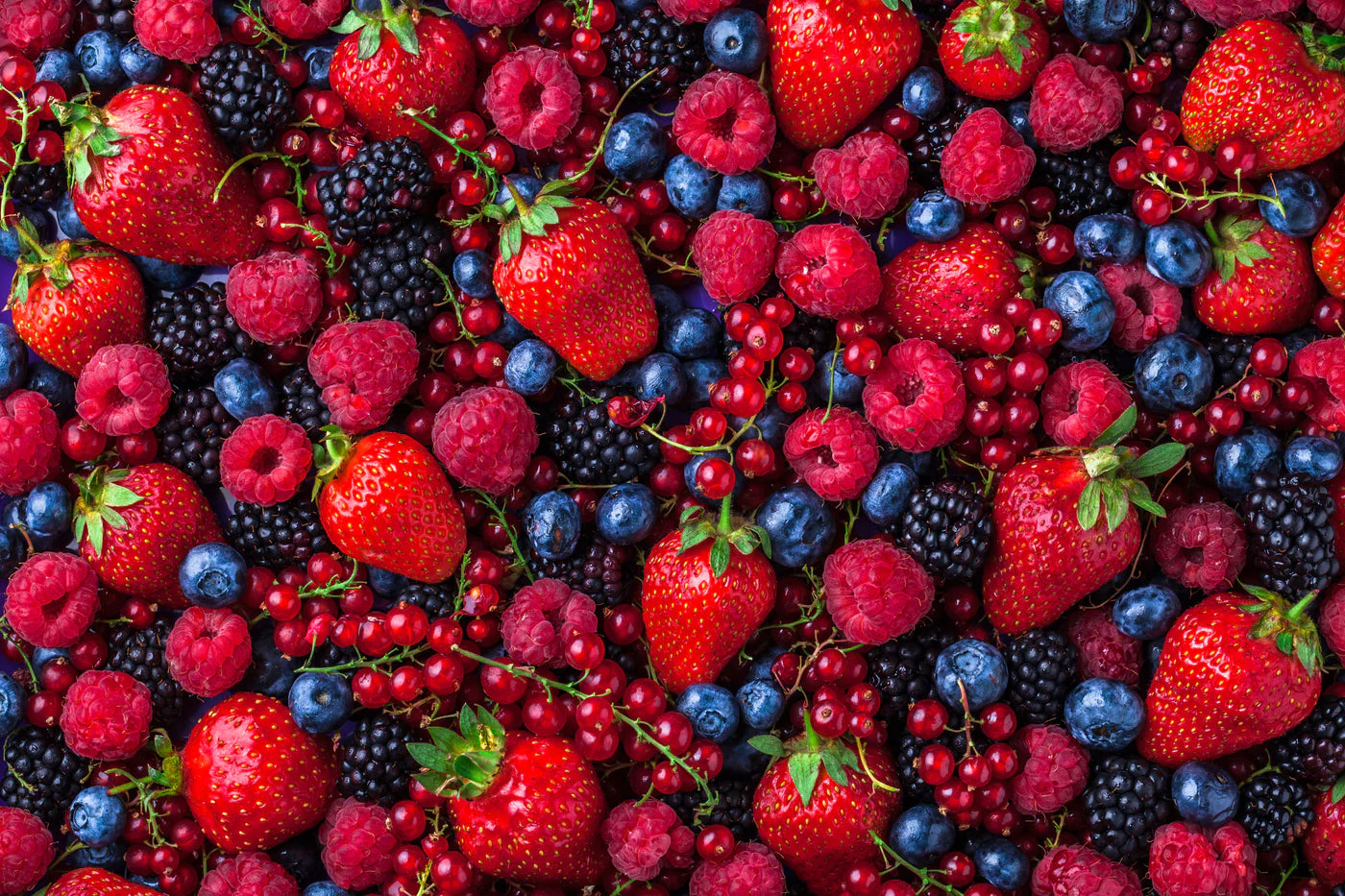Reap the fruits of your labor
It is harvest season for berries! Hopefully, you were able to get your plants in the ground and be the lucky berry benefactor. Imagine all the uses for the scrumptious little jewels: canning, baking, preserving, smoothies, sauces, freezing, making ice cream, or eating fresh off the vine or bush. Berries have loads of health benefits and keep giving year over year. Additional creative ideas to use your berries are freezing them in ice cube trays and use them to keep summer drinks cold. Infuse a spirit like vodka or gin with juicy berries. Tasty vinegars can also be created with summer fruit. Use your imagination and become an expert in summer berry harvesting.
Blueberries

Blueberries, native to North America, should be picked in early June through early August. They are long-lived as fruit trees, with few pests or diseases. Blueberries require an acidic soil, which will need amendment to properly suit their needs. Irrigate these plants regularly because of shallow root systems. Blueberries in clusters do not ripen at the same time; only fully ripe berries should be harvested. Fruit needs at least 1-2 days after turning blue to develop full flavor. and can remain on the bush for up to 10 days without a loss in size. Leave blueberries on the bush for as long as possible to develop sweetness and flavor.
Blackberries and Raspberries (Cane berries)
Blackberry and raspberry harvests are from mid-June to early October. Blackberries and raspberries like full sun and have a long fruit-bearing life, producing for a decade or longer. They thrive in moist, cool climates like Oregon’s. Irrigate, prune, and fertilize for best results. Pick fruit twice a week, and during hot rainy weeks, every other day. Harvest after the morning dew has dried. Pick carefully to avoid bruising the fruit, and as with blueberries, refrigerate quickly to limit fruit rot. The sweetest, best tasting fruit is produced during dry sunny weather when nights are cooler. These berries are known as Cane berries because they grow on a hard, woody stems. Cane berries can grow rapidly, depending on the variety. A good way to maintain them is to grow them along a fence line so they have something to grow on and they can disguise the fence behind them. Prune and trim them right after they are done producing fruit in late summer and in early February before they start to grow. Other varieties of Cane berries are boysenberries and marionberries.
Here are some options for cane berries:
- ‘Munger’ Black Raspberry is perfect for making preserves.
- ‘Black Satin’ Thornless Blackberry is disease resistant and have a sweet flavor.
- ‘Heritage’ Raspberry is great to eat fresh or canned and are everbearing in July and September.
- ‘Willamette’ Raspberry ripens early and is disease resistant.
- ‘Meeker’ Raspberry is a great mid-season ripener with a high sugar content that provides great flavor.
Strawberries

Strawberries are late spring/early summer fruit bearers. Varieties like Benton, Hood, Puget Reliance, and Shuksan produce fruit in June, while Seascape and Tribute are everbearing. Strawberries do well in small spaces and gardens. They do require well-drained soil and full sun. Water these plants well while also allowing them to dry out between waterings. Like other berries, strawberries need fertilization, acidic soil, and mulching. Pick berries often as they ripen to prevent rotting. Flowers should be pinched off as soon as they appear to promote robust plant growth and early formation of runner plants. The first crop should be harvested a year from planting. Position runners so they develop a density of approximately 5 plants per square foot.
Protection and Growing Guides
We love the birds, squirrels, and other critters but they are not friends to our gardens! Depending on your preferences and the types of animals attempting to feast on your berry bushes, here are some recommended deterrents:
- Fencing is a necessity if you have issues with deer, rabbits, or other animals.
- Bird netting prevents birds from stealing your fruits from above. Delay installing bird netting until the berries/fruits begin ripening. The plant will start to grow into and through the netting if installed too early.
- Repellents are another option if fencing or netting are not options. Look for a repellent that is safe for edibles to ensure that your berries stay safe to eat. When applying repellents to your berry bushes, apply them to the ground and around the plant, according to package instructions.
Learn more about growing a cornucopia of berries by visiting our website.

Do you carry the netting for blue berries? What is the cost?
Leave a comment